Mike Nevell and Nigel Linge are pleased to offer a . . . .
Walking Tour of Manchester’s Transport and Telecommunications Heritage
The date of the next tour will be announced here once it is confirmed
Mike Nevell, Head of Archaeology and Nigel Linge, Professor of Telecommunications, from the University of Salford, are pleased to offer a free guided heritage walking tour that examines Manchester’s rich transport and telecommunications heritage. These tours are normally scheduled to coincide with larger regional events such as the Greater Manchester Archaeology Festival and the Manchester Histories Festival and dates will be announced here once they are confirmed.
As the world’s first industrial city, Manchester built its wealth on the global trade in finished cotton goods. By the 16th century it had already established an early pre-eminence as a cloth town which combined manufacture with trade. In the 18th century, when the cotton trade expanded, Manchester was well placed to exploit its potential for wealth creation. Earning itself the name ‘Cottonopolis’, the 19th century textile manufacturing centre of the world, Manchester has also been described as a ‘citadel to commerce’.
The transport revolution of the 18th and 19th centuries transformed Manchester into a major transport interchange and helped to boost the growth of the cotton industry. The Bridgewater Canal, which terminated in Castlefield, pioneered a process which ended in industrial Manchester being the nexus of the transport revolution in the region. In 1830 Manchester achieved another transport first with the arrival of the Liverpool & Manchester Railway line, which terminated at Liverpool Road Station in Castlefield.
Manchester’s dominance as a financial and commercial centre in the second half of the 19th century is reflected in the number of warehouses built within the city centre. As early as 1806 there were 1,182 warehouse units for rent and by 1815 there were 1,819. Consequently, Manchester has been called the ‘warehouse city’. At first these were concentrated around King Street but by 1850 they had spread to Portland Street and by the early 20th century to Whitworth Street. One of the best concentrations is along Charlotte Street demonstrating the ‘flamboyant facades and very plain rears’ and consistent proportions of the ‘palazzo’ warehouse blocks.
Its rapid growth and commercial strength ensured that Manchester was always, and continues to be, an early adopter of new communications technology. Manchester became the first UK city to receive a telephone installed under licence from the Post Office in 1878 which was quickly followed in 1879 by the opening of one of the UK’s first telephone exchanges at Faulkner Street. With the switch from analogue to digital transmission, Manchester continued to be at the forefront of the development of the national data and telephone networks and in 1959 was at the centre of the launch of the first public radiophone service for the public, the South Lancashire Radiophone Service; a precursor to today’s mobile phone. Indeed Manchester was chosen as one of the launch cities for the latest development in mobile telephony, 5G.
The interplay of science, industry and society shaped Manchester and helped in establishing it as a connected city, not only in terms of its transportation links but also its telecommunications infrastructure and this is what we’ll be exploring on the walking tour.
Registration, assembly point, start time and duration
Whilst there is no charge to participate in our walking tours, there is a requirement to register for the event so that we can manage numbers. When a date is confirmed, please use the button at the bottom of this section to register your place.
Once your place is confirmed, we ask that you assemble for an 11:00am start next to the Lancashire and Yorkshire Railway map in Manchester Victoria Railway station. Following a short introduction, the tour will set off on a route covering the key points of interest which takes you to Castlefield, close to the Science and Industry Museum on Liverpool Road, where the tour ends at approximately 3:00pm.
We reserve the right to curtail the tour due to inclement weather.
Please allow four hours to complete the entire tour. The tour will halt for approximately 30 minutes at an appropriate point for a refreshment break. However, the cost of refreshments is not included in your registration.
The full walking tour is between 3 and 4 miles in length and whilst we remain on footpaths and hard surfaces throughout, please ensure you are wearing appropriate footwear. If it is especially sunny and hot, you are also advised to bring along a bottle of water and wear sun protection.
Walking Tour Taster
Our guided walking tour will cover and explore several points of interest, including . . . .
How and why the canals were an integral part in the development of Manchester as a major industrial city. The symbiotic relationship between the development of the railways and the electric telegraph. The site of Manchester’s, and the UK’s, first telephone installation carried out by Messrs. David Moseley & Sons under licence from the Post Office. Manchester’s only example of a stone built warehouse. The location of a warehouse formerly owned by John Pender, the man whose companies pioneered the laying of under-sea electric telegraph cables and in so doing, wired the world, earning him the name, “Cable King” in the process. The site of Manchester’s first telephone exchange - one of the first in the country - and the building in which the precursor to today’s mobile phones - the South Lancashire Radiophone Service - was launched. One of the earliest suburban railways in the country and, of course, the oldest purpose built passenger railway station in the world.
These sites, and many more, are featured on our interactive map that has been developed to accompany the walking tour and which can be accessed below.
Walking Tour Interactive Map
The interactive map identifies key locations of relevance to Manchester’s transport and telecommunications heritage. This map can be accessed whilst participating in the tour, or used to facilitate a self-guided walk or simply browsed at your leisure. Please note that there are more sites shown on the map than are normally covered during each guided walk.
Sites are indicated on the map by a coloured circle and letter code. Green indicates a transport related site whilst red indicates a telecommunications related site. Additionally, Manchester’s surviving Giles Gilbert Scott K6 red phoneboxes are also indicated. Clicking a circle or phonebox produces a pop-up that identifies that site and provides a link to further, more detailed, information.
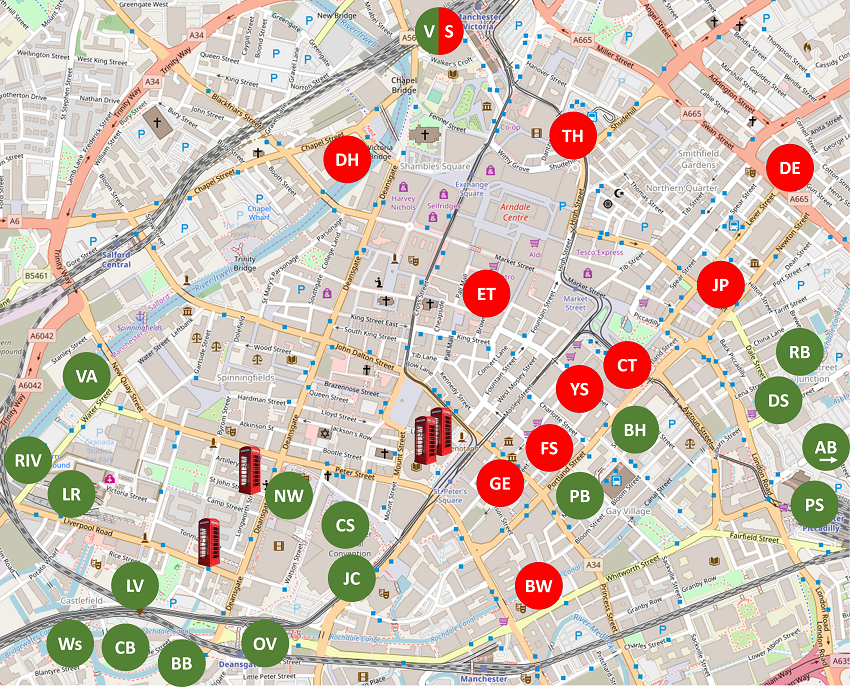
Please help promote our walking tour via social media . . . . .
Thank you for exploring Manchester’s transport and telecommunications heritage. We are constantly seeking ways to improve these webpages and so we very much welcome your feedback, new information to add and suggestions for other places of interest to include on the tour. Do please get in touch to give us your thoughts.
Victoria Railway Station
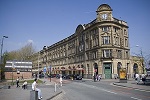
Manchester Victoria Railway station, an important transport hub and school for electrical telegraphy.
Pickles Building (former)
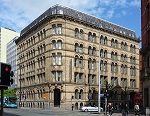
The former Pickles Building was a textile warehouse built c1870.
The Britannia Hotel
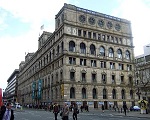
The Britannia Hotel, a former textile warehouse and showroom designed in 1854.
Castlefield Canal Basin

Castlefield Canal Basin was the 1865 terminus of the Bridgewater Canal and became the transport hub of Manchester.
Bridgewater Canal Basin

Bridgewater Canal Basin with its self acting sluice which diverts surplus water from the River Medlock away from the basin.
Bridgewater Canal Warehouses
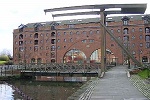
Bridgewater Canal Warehouses include the Merchant, Grocers and Middle Warehouses, each of which has its own unique features.
Victoria and Albert Warehouses
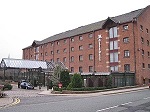
Victoria and Albert Warehouses built c1838 but now converted into a hotel.
Manchester and Salford Junction Canal

Manchester and Salford Junction Canal - tunneled section under the Manchester Convention Centre.
Liverpool Road Railway Station
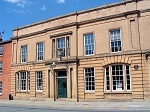
Liverpool Road Railway Station and associated buildings. The oldest purpose built passenger railway station in the world.
River Irwell Viaduct

River Irwell viaduct crossing for the Liverpool and Manchester Railway, c1830.
Manchester Central Station

Manchester Central Station, now the Manchester Convention Centre, has the second largest single span wrought iron train shed roof in the country.
The Great Northern Warehouse
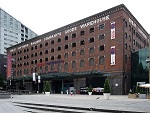
The Great Northern Warehouse is the best surviving example of a rail / road / canal interchange.
Castlefield cast iron viaducts

Two fine examples of cast iron railway viaducts which dominate the Castlefield basin.
Manchester’s 224 arch brick viaduct
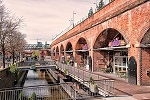
The 224 arch brick railway viaduct which connects Piccadilly Station to Ordsall Junction formed part of one of the earliest suburban railways in the country.
Manchester Piccadilly Railway Station

Manchester Piccadilly is the city’s principal railway station but dates from 1866 when it was known as Manchester London Road.
Ducie Street Warehouse

Ducie Street Warehouse is a monumental railway warehouse and the only survivor of four within this part of Manchester.
Daily Express Building
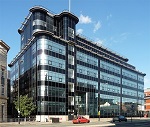
The Daily Express building in Ancoats not only represents Manchester's influential newspaper industry but was also once described as the best building in Manchester between the wars.
John Pender: 29 Dale Street
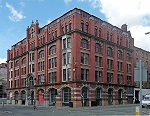
John Pender was a pioneer of global communications who made his fortune as a Cotton Merchant in Manchester from his premises at 29 Dale Street. He created the world’s largest undersea telegraph company which ultimately became Cable and Wireless.
Eastern Telegraph Office
The Eastern Telegraph Company opened its Manchester Office at 20 Norfolk Street which allowed the public to send telegrams throughout the world.
Thomas Hudson’s premises, Shudehill
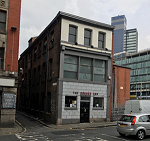
Thomas Hudson a hardware merchant of Shudehill was the recipient of Manchester’s first telephone. In fact his was the first telephone installed anywhere within the country under licence from the Post Office.
Faulkner Street telephone exchange
Manchester’s first telephone exchange was opened by the Lancashire Telephonic Exchange in 1879 on Faulkner Street. Today the Chinese Arch stands on that site.
Manchester’s secret Guardian Exchange
The entrance to Manchester’s underground, nuclear hardened, secret Guardian Telephone Exchange and tunnel complex is an unassuming building on George Street.
Telephone House & Rutherford House
The former Telephone House and Rutherford House on York Street are two buildings that have, and continue, to play an important role in the provision of telephone services within Manchester.
City Tower
City Tower was once Europe’s largest microwave communications hub and today continues to play an important role in keeping the city connected.
Dial House, Salford
Dial House is a major telephone exchange located in Salford but on the boundary with Manchester that has been at the forefront of several developments in communications technology.
Bridgewater House
Bridgewater House is a former Regional HQ for BT and supported the pioneering Confravision videoconferencing service launched in 1971.
Ashton Canal Basin

Remains of the Ashton Canal basin
Rochdale Canal Basin

The Rochdale Canal basin, also known as Piccadilly Basin, is home to Manchester's only stone built warehouse.
K6 Kiosk, St John Street
A pre-1953, Tudor Crown, K6 kiosk (phonebox).
K6 Kiosk, Liverpool Road
A pre-1953, Tudor Crown, K6 kiosk (phonebox).
K6 Kiosk pair, Central Library
A pair of K6 kiosks. The one on the left is a pre-1953, Tudor Crown and the one on the right is a post 1955, St Edwards Crown (slotted), K6 Kiosk (phonebox).


Follow on social media .....